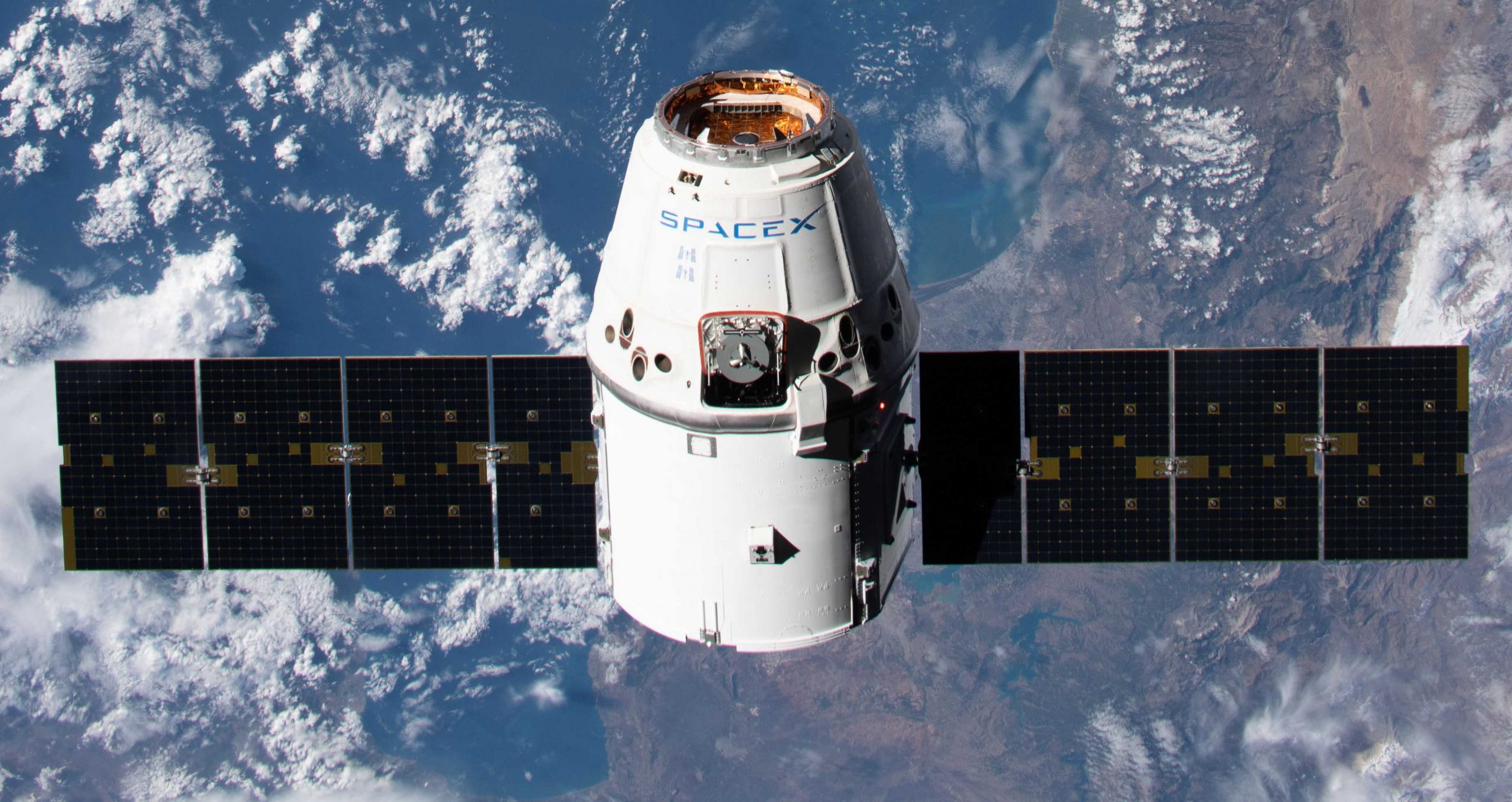
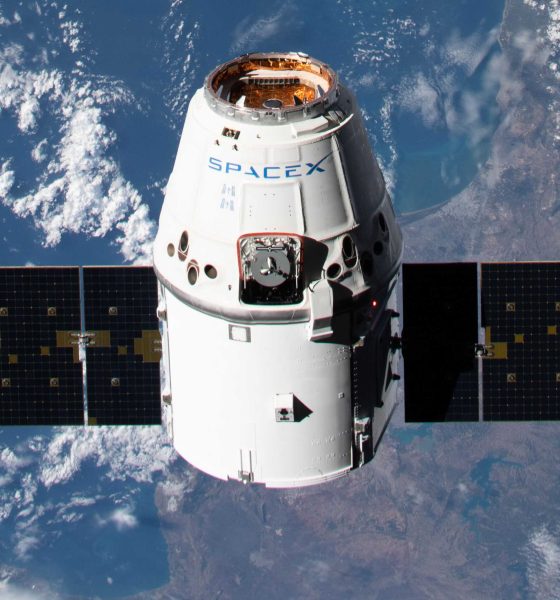
News
SpaceX Cargo Dragon spacecraft arrives at space station on second to last mission
SpaceX’s Cargo Dragon has successfully rendezvoused with the International Space Station (ISS) as part of NASA’s CRS-19 resupply mission, marking what is almost certainly the spacecraft’s second to last orbital launch.
On December 5th, new Falcon 9 booster B1059 lifted off from SpaceX’s LC-40 Cape Canaveral Air Force Station (CCAFS) launch pad with a fresh upper stage and twice flown Cargo Dragon capsule C106 atop it. A little over nine minutes after launch, B1059 prepared to be robotically secured on drone ship Of Course I Still Love You (OCISLY) while Cargo Dragon – now in orbit – separated from Falcon 9’s upper stage and headed on its merry way.
Cargo Dragon’s 20th orbital mission and 19th trip to the ISS, CRS-19’s twice-flown spacecraft commanded the deployment of its two solar arrays, primed its Draco maneuvering thrusters, and opened up its Guidance, Navigation, and Control (GNC) bay. Using star trackers, inertial measurement devices, and lasers, Dragon then proceeded to precisely deliver itself to the ‘door’ of the space station before gradually approaching.
Astronauts aboard the ISS then manually guided Canadarm2 – a massive robotic arm externally attached to the space station – towards Cargo Dragon as it used its thrusters to essentially hover in place, ultimately grabbing the spacecraft with a sort of mechanical hand. At that point, Dragon effectively became a part of the ISS and astronauts monitored the subsequent (and mostly automated) process of using Canadarm2 to fully berth spacecraft with the station.
After berthing, astronauts are able to equalize the pressure between the ISS and visiting spacecraft and open the hatch, gaining access to whatever cargo it was loaded with prior to launch. Alternatively, visiting vehicles can also dock with the International Space Station, a process controlled entirely by the arriving spacecraft, a bit like berthing but with almost all of the risk on its shoulders. All Russian spacecraft currently use this method, as do Boeing’s Starliner and SpaceX’s Crew Dragon.
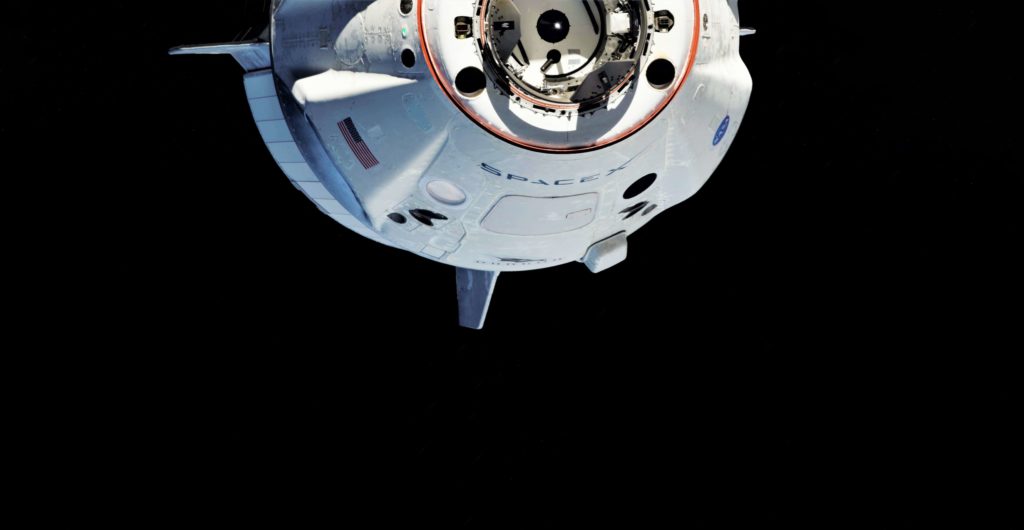
As it turns out, CRS-19 – partially hinted at in the name – is the second to last launch of SpaceX’s Dragon 1 (Cargo Dragon), which become the first commercial spacecraft capable of reentering Earth’s atmosphere in 2010 and rendezvousing with a space station in 2012. Five months later, SpaceX launched CRS-1 – its first operational resupply mission – and the rest is (more or less) history.
In the seven years since CRS-1, Cargo Dragon – including CRS-19 – has now flown 18 successful space station resupply missions and delivered more than 90,000 lb (50,000 kg) to its ever-changing crew of astronauts. Cargo Dragon has undergone at least two significant upgrades and suffered its fair share of mishaps, but has still successfully completed its mission every time it reached orbit.
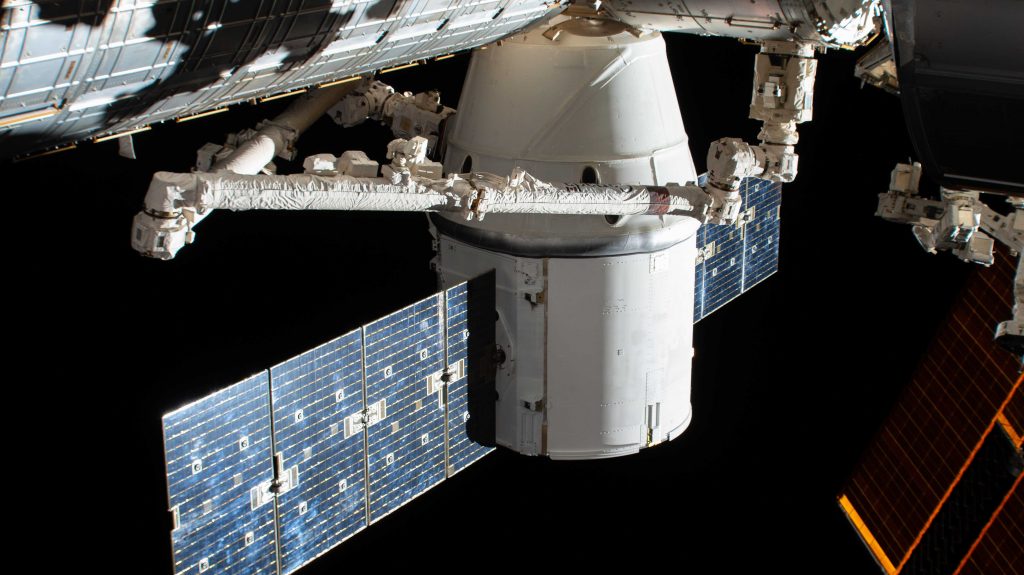

NASA’s CRS1 SpaceX contract ultimately called for a total of 20 Cargo Dragon missions to the ISS, although more could technically be added retroactively if both entities were to decide they were needed. Currently, the plan is for CRS-20 – Cargo Dragon’s next launch – to be the spacecraft’s last orbital mission and is scheduled no earlier than March 2020.
After CRS-20, SpaceX – via its subsequent CRS2 NASA contract – means to introduce a version of Crew Dragon (Dragon 2) modified for cargo-only missions, optimally taking flight-proven Crew capsules and reusing them as Cargo Dragon 2s.
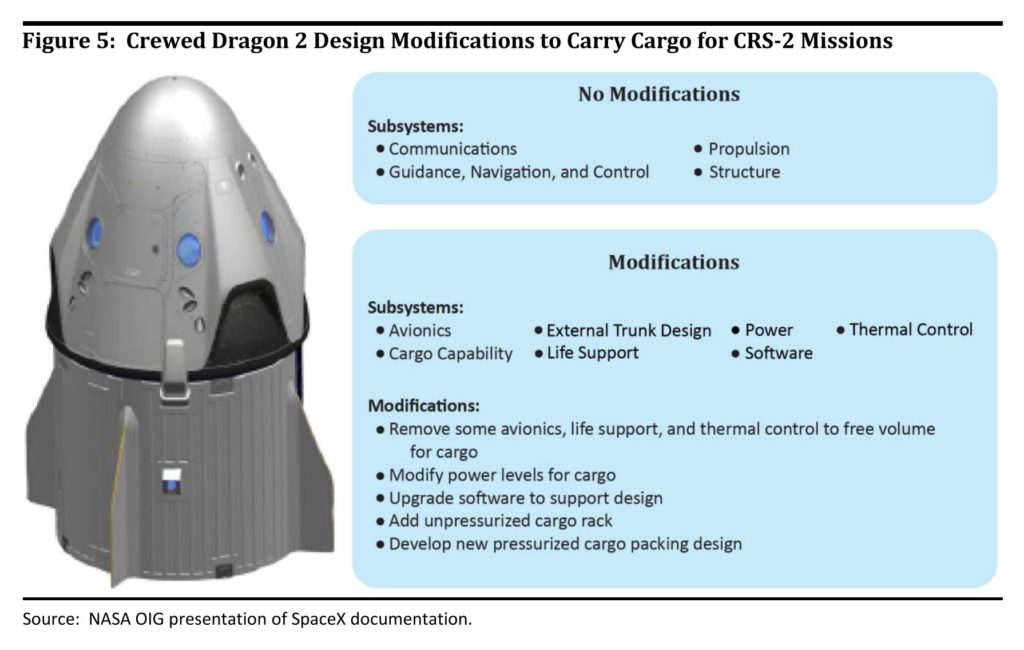
SpaceX recently revealed that the first Cargo Dragon 2 spacecraft will unexpectedly not feature Crew Dragon’s complex SuperDraco abort system, a feature that has recently created several roadblocks. However, this dramatically simplifies Dragon 2 and means that SpaceX is still quite confident that the upgraded cargo spacecraft will be ready for its launch debut next year.
Known as CRS-21, that mission will see SpaceX’s CRS launches move from LC-40 to Kennedy Space Center’s LC-39A pad in order to enable extremely late and convenient cargo-loading via Pad 39A’s Crew Access Arm (CAA), to be primarily used by astronauts boarding Crew Dragon. Similarly, Cargo Dragon 2 will dock with the ISS instead of using Dragon’s current berthing route, nominally requiring less hands-on astronaut time for each resupply mission.
Cargo Dragon will be missed but will forever remain a major piece of commercial spaceflight history. Dragon 2 will likely toe the line for the first half of the next decade, but SpaceX ultimately wants to get its generation Starship launch vehicle online as soon as possible – a feat that will make all Falcon and Dragon vehicles redundant if things go as planned.
Check out Teslarati’s newsletters for prompt updates, on-the-ground perspectives, and unique glimpses of SpaceX’s rocket launch and recovery processes.

News
Tesla hints toward Premium Robotaxi offering with Model S testing
Why Tesla has chosen to use a couple of Model S units must have a reason; the company is calculated in its engineering and data collection efforts, so this is definitely more than “we just felt like giving our drivers a change of scenery.”

Tesla Model S vehicles were spotted performing validation testing with LiDAR rigs in California today, a pretty big switch-up compared to what we are used to seeing on the roads.
Tesla utilizes the Model Y crossover for its Robotaxi fleet. It is adequately sized, the most popular vehicle in its lineup, and is suitable for a wide variety of applications. It provides enough luxury for a single rider, but enough room for several passengers, if needed.
However, the testing has seemingly expanded to one of Tesla’s premium flagship offerings, as the Model S was spotted with the validation equipment that is seen entirely with Model Y vehicles. We have written several articles on Robotaxi testing mules being spotted across the United States, but this is a first:
🚨 Tesla is using Model S vehicles fitted with LiDAR rigs to validate FSD and Robotaxi, differing from the Model Ys that it uses typically
Those Model Y vehicles have been on the East Coast for some time. These Model S cars were spotted in California https://t.co/CN9Bw5Wma8 pic.twitter.com/UE55hx5mdd
— TESLARATI (@Teslarati) December 11, 2025
Why Tesla has chosen to use a couple of Model S units must have a reason; the company is calculated in its engineering and data collection efforts, so this is definitely more than “we just felt like giving our drivers a change of scenery.”
It seems to hint that Tesla could add a premium, more luxury offering to its Robotaxi platform eventually. Think about it: Uber has Uber Black, Lyft has Lyft Black. These vehicles and services are associated with a more premium cost as they combine luxury models with more catered transportation options.
Tesla could be testing the waters here, and it could be thinking of adding the Model S to its fleet of ride-hailing vehicles.
Reluctant to remove the Model S from its production plans completely despite its low volume contributions to the overall mission of transitioning the world to sustainable energy, the flagship sedan has always meant something. CEO Elon Musk referred to it, along with its sibling Model X, as continuing on production lines due to “sentimental reasons.”
However, its purpose might have been expanded to justify keeping it around, and why not? It is a cozy, premium offering, and it would be great for those who want a little more luxury and are willing to pay a few extra dollars.
Of course, none of this is even close to confirmed. However, it is reasonable to speculate that the Model S could be a potential addition to the Robotaxi fleet. It’s capable of all the same things the Model Y is, but with more luxuriousness, and it could be the perfect addition to the futuristic fleet.
News
Rivian unveils self-driving chip and autonomy plans to compete with Tesla
Rivian, a mainstay in the world of electric vehicle startups, said it plans to roll out an Autonomy+ subscription and one-time purchase program, priced at $49.99 per month and $2,500 up front, respectively, for access to its self-driving suite.
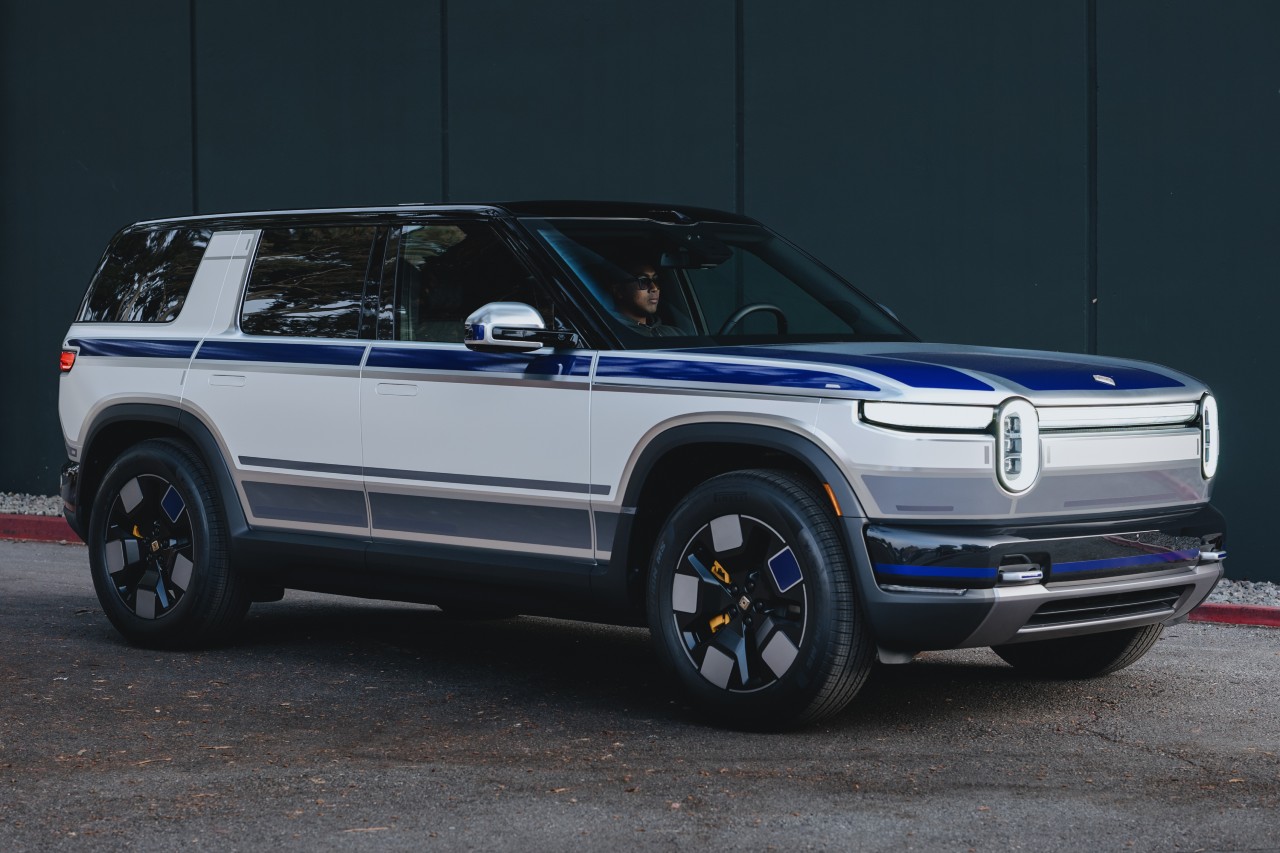
Rivian unveiled its self-driving chip and autonomy plans to compete with Tesla and others at its AI and Autonomy Day on Thursday in Palo Alto, California.
Rivian, a mainstay in the world of electric vehicle startups, said it plans to roll out an Autonomy+ subscription and one-time purchase program, priced at $49.99 per month and $2,500 up front, respectively, for access to its self-driving suite.
CEO RJ Scaringe said it will learn and become more confident and robust as more miles are driven and it gathers more data. This is what Tesla uses through a neural network, as it uses deep learning to improve with every mile traveled.
He said:
“I couldn’t be more excited for the work our teams are driving in autonomy and AI. Our updated hardware platform, which includes our in-house 1600 sparse TOPS inference chip, will enable us to achieve dramatic progress in self-driving to ultimately deliver on our goal of delivering L4. This represents an inflection point for the ownership experience – ultimately being able to give customers their time back when in the car.”
At first, Rivian plans to offer the service to personally-owned vehicles, and not operate as a ride-hailing service. However, ride-sharing is in the plans for the future, he said:
“While our initial focus will be on personally owned vehicles, which today represent a vast majority of the miles to the United States, this also enables us to pursue opportunities in the rideshare space.”
The Hardware
Rivian is not using a vision-only approach as Tesla does, and instead will rely on 11 cameras, five radar sensors, and a single LiDAR that will face forward.
It is also developing a chip in-house, which will be manufactured by TSMC, a supplier of Tesla’s as well. The chip will be known as RAP1 and will be about 50 times as powerful as the chip that is currently in Rivian vehicles. It will also do more than 800 trillion calculations every second.
Meet the Rivian Autonomy Processor.
Fast, smart, scalable and purpose-built for autonomous driving and the world of physical AI. Hitting the open road in 2026. pic.twitter.com/0wYXi5WKy7
— Rivian (@Rivian) December 11, 2025
RAP1 powers the Autonomy Compute Module 3, known as ACM3, which is Rivian’s third-generation autonomy computer.
ACM3 specs include:
- 1600 sparse INT8 TOPS (Trillion Operations Per Second).
- The processing power of 5 billion pixels per second.
- RAP1 features RivLink, a low-latency interconnect technology allowing chips to be connected to multiply processing power, making it inherently extensible.
- RAP1 is enabled by an in-house developed AI compiler and platform software
As far as LiDAR, Rivian plans to use it in forthcoming R2 cars to enable SAE Level 4 automated driving, which would allow people to sit in the back and, according to the agency’s ratings, “will not require you to take over driving.”
More Details
Rivian said it will also roll out advancements to the second-generation R1 vehicles in the near term with the addition of UHF, or Universal Hands-Free, which will be available on over 3.5 million miles of roadway in the U.S. and Canada.
More than any other feature, our owners have asked for more hands-free miles.
With Universal Hands-Free, you can now enjoy hands-free assisted driving on any road with clearly defined lanes. That’s roughly 3.5 million miles in the U.S. and Canada.
Look for it in our next… pic.twitter.com/ZFhwVzvt6b
— Rivian (@Rivian) December 11, 2025
Rivian will now join the competitive ranks with Tesla, Waymo, Zoox, and others, who are all in the race for autonomy.
News
Tesla partners with Lemonade for new insurance program
Tesla recently was offered “almost free” coverage for Full Self-Driving by Lemonade’s Shai Wininger, President and Co-founder, who said it would be “happy to explore insuring Tesla FSD miles for (almost) free.”
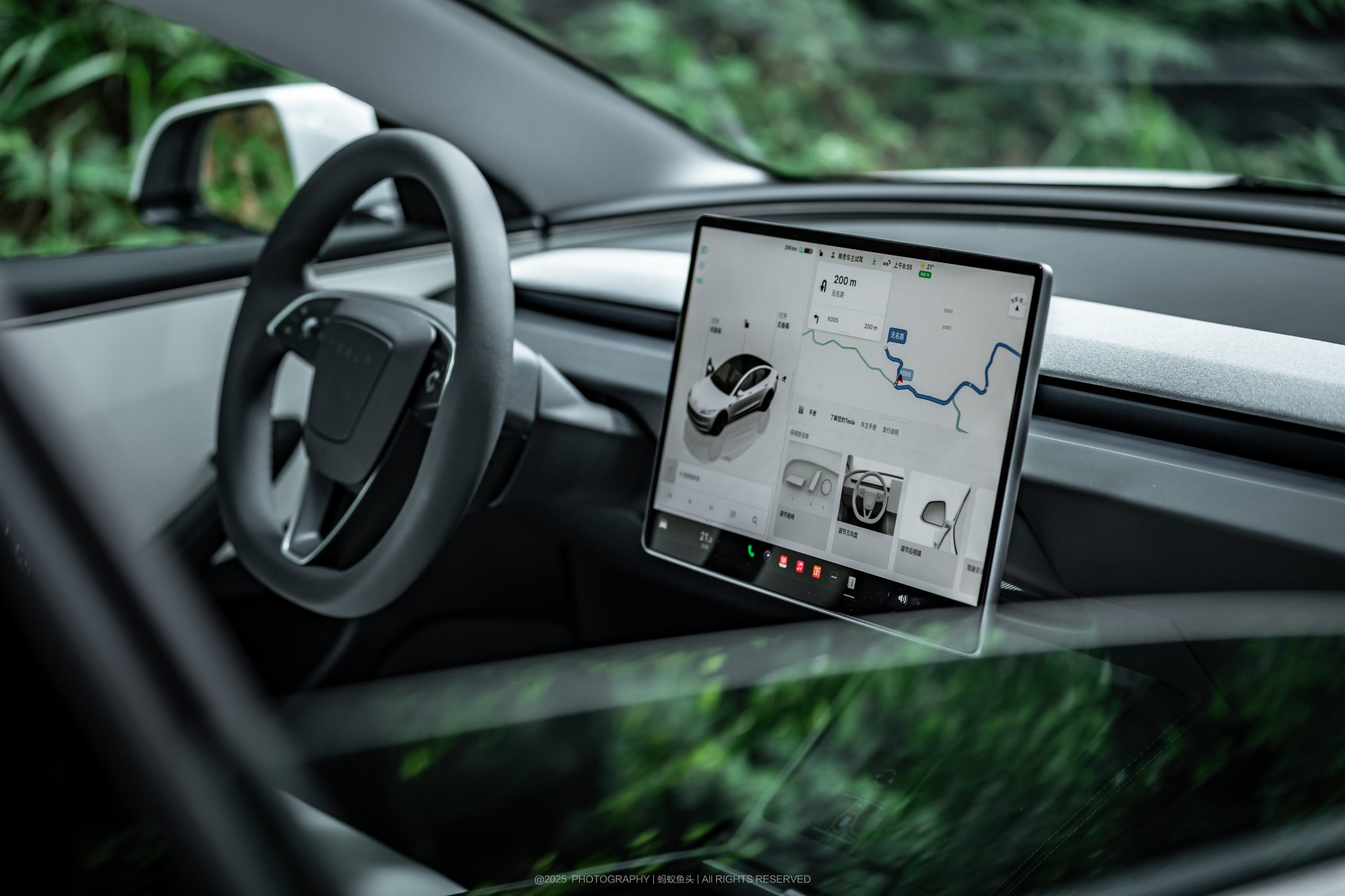
Tesla owners in California, Oregon, and Arizona can now use Lemonade Insurance, the firm that recently said it could cover Full Self-Driving miles for “almost free.”
Lemonade, which offered the new service through its app, has three distinct advantages, it says:
- Direct Connection for no telematics device needed
- Better customer service
- Smarter pricing
The company is known for offering unique, fee-based insurance rates through AI, and instead of keeping unclaimed premiums, it offers coverage through a flat free upfront. The leftover funds are donated to charities by its policyholders.
On Thursday, it announced that cars in three states would be able to be connected directly to the car through its smartphone app, enabling easier access to insurance factors through telematics:
Lemonade customers who own @Tesla vehicles in California, Oregon, and Arizona can now connect their cars directly to the Lemonade app! ⚡🚘
Direct connection = no telematics device needed 📵
Better customer experience 💃
Smarter pricing with Lemonade 🧠This is a game-changer… pic.twitter.com/jbabxZWT4t
— Lemonade (@Lemonade_Inc) December 11, 2025
Tesla recently was offered “almost free” coverage for Full Self-Driving by Lemonade’s Shai Wininger, President and Co-founder, who said it would be “happy to explore insuring Tesla FSD miles for (almost) free.”
The strategy would be one of the most unique, as it would provide Tesla drivers with stable, accurate, and consistent insurance rates, while also incentivizing owners to utilize Full Self-Driving for their travel miles.
Tesla Full Self-Driving gets an offer to be insured for ‘almost free’
This would make FSD more cost-effective for owners and contribute to the company’s data collection efforts.
Data also backs Tesla Full Self-Driving’s advantages as a safety net for drivers. Recent figures indicate it was nine times less likely to be in an accident compared to the national average, registering an accident every 6.36 million miles. The NHTSA says a crash occurs approximately every 702,000 miles.
Tesla also offers its own in-house insurance program, which is currently offered in twelve states so far. The company is attempting to enter more areas of the U.S., with recent filings indicating the company wants to enter Florida and offer insurance to drivers in that state.








